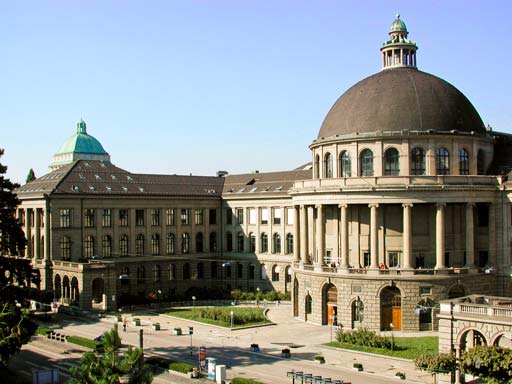
A living center of science for the city of Zurich and the world beyond,
ETH Zurich is pleased to offer first-rate conference and meeting facilities as host to ECC13. Tried and tested cooperation with industry, its location in the heart of Europe and strong relationships with other world-class universities and research institutions have helped ETH Zurich forge a unique regional and international knowledge environment that draws strength from the multi-lingual and rich cultural tradition of Switzerland.
ETH Zurich has come to symbolise excellent education, groundbreaking basic research and applied results that are beneficial for society as a whole. Founded in 1855, it today offers researchers an inspiring environment and students a comprehensive education as one of the world's leading universities for technology and the natural sciences.
ETH Zurich has more than 16,000 students from approximately 80 countries, 3,500 of whom are doctoral candidates. More than 400 professors teach and conduct research in the areas of engineering, architecture, mathematics, natural sciences, system-oriented sciences, and management and social sciences. ETH Zurich regularly appears at the top of international rankings as one of the best universities in the world. 21 Nobel Laureates have studied, taught or conducted research at ETH Zurich, underlining the excellent reputation of the institute.
ETH has a long history in the field of controls research. Adolf Hurwitz, appointed professor of Mathematics at ETH in 1894, published what is possibly the first use of stability conditions in the design of a practical control system is his paper Bedingungen, unter welchen eine Gleichung nur Wurzeln mit negativen reellen Theilen besitzt (Mathematische Annalen, 1895).
Aurel Stodola, appointed professor at ETH in 1892, built on Hurwitz' work with an investigation of the so-called inertia controllers (shaft governors combining inertial and centrifugal action), and seems to have been the first person to realize that the inertia controller was a proportional derivative controller. Stodola's methods formed the basis of the extensive treatment of existing ideas of control theory given in the book by Tolle, Regelung der Kraftmaschinen, published in 1905, the most important book on the subject of control for almost two decades.
For more information on the history of controls research at ETH, click here.
